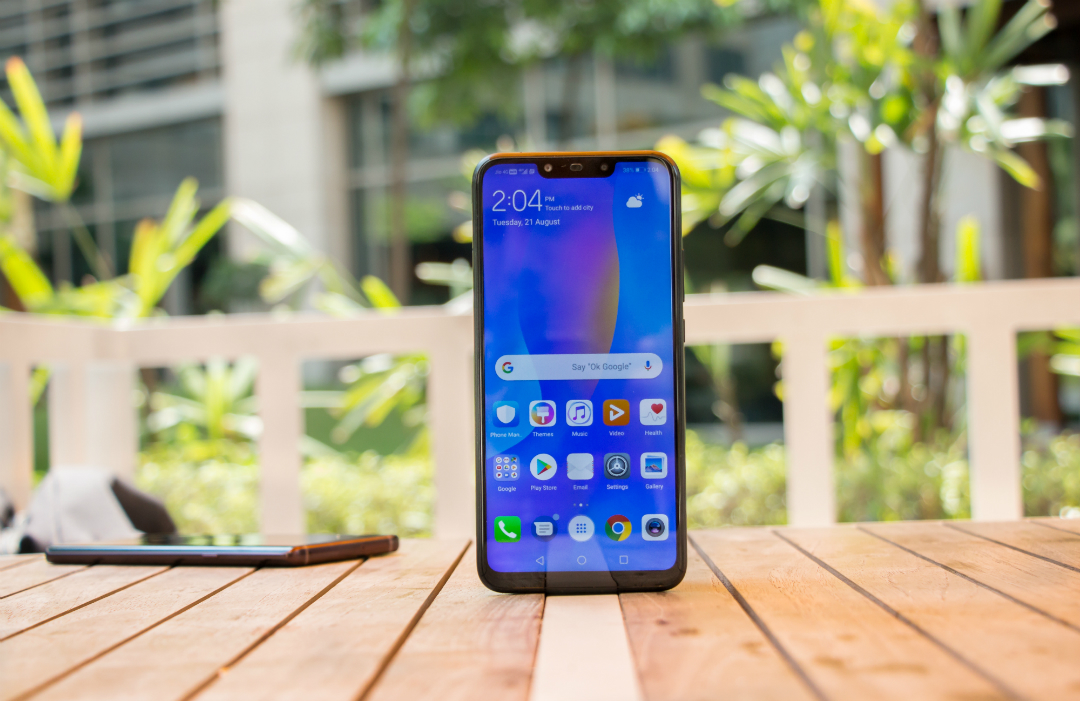Why you can trust TechRadar
Interface and reliability
- EMUI 8.2.0 built on Android 8.1
- Not pretty but fast and functional
- Usual Huawei bloatware
The Huawei Nova 3i runs on Android 8.1 Oreo, which isn’t the very latest version of Google’s OS, but it's the latest major release. Note that the exact version of Android doesn't majorly matter as it comes with EMUI 8.2.0 skin on top.
In all honesty, the EMUI has improved a lot over the years. Although it's not the best custom skin, it still reasonable fluid and stutter-free on the Nova 3i. It is easy to operate, and despite a different icon pack and other tweaks, it still sticks to the principles laid by Google.

There's a classic Android app drawer put at rest in the settings. So if you prefer an app drawer like me, the first thing to do is to enable it from the settings menu. Luckily, you have an option here.
The EMUI is heavily built skin, which comes with its own advantages and flaws. It packs a lot of neat tricks hiding inside the phone, so if you buy it, you will end up spending a lot of time discovering all its features. My favorites are pick up to reduce the ringing volume or wake your phone, raise to ear to make calls, smart screen resolution, private space and app cloning.
There are some really handy additions like- drag down from the middle of the screen to open universal search to look for apps, contacts, messages and other files on the phones.
What I never liked is the bunch of apps and games that Huawei bundles in the UI. There are more than 10 apps on the phone out of the box, which you eventually will end up uninstalling. Sadly though, you cannot remove Huawei's own suite of apps like Video, Music, Health, Calendar, and a dozen or so Tools, which double as inferior duplicates of Google apps.
Another downside is its bumbling interface in comparison to stock Android or iOS. Remember what I said about the 'Background' and 'Effects' in the camera app, the same applies to the icon pack and themes as well. They are just a level or two below classy for a phone that looks so stunning.
At last, if we keep the looks aside for a moment, the battery management and optimisation on the launcher does steal some green points. It's a fluid launcher that does not compliment the physical design equally well in terms with its aesthetics.
Movies, music and gaming
- Headphone jack and one underwhelming speaker
- GPU Turbo disappoints
Starting with the multimedia, this phone can be a perfect pocket entertainment alternative. it has a huge 6.3-inch full HD display, which is perfect for watching content on the go. The videos can be viewed on 18:9 aspect ratio, and since it has a headphone jack, it makes a perfect companion to watch shows on the go. Nothing to complain here.
The loudspeaker on the phone is quite underwhelming. Be it music or gaming, it just fails to provide rich output from the speaker. Keeping a pair of headphones is a wiser idea to have the best audio experience on this phone.
There are many that don't play games on their phone, many who play lightweight time-killing games during the commute, but very recently a new breed is on a rise and those are called smartphone gamers. The term came in on a large scale with the arrival of the very popular battle royale game PUBG. The game is a real-time simulation of a shoot to survive kind of format and demands extraordinary processing power for a seamless experience.
I am a level 50+ player on PUBG mobile, which also means I have played more than 500 games already on more than 15 devices. I have played it on a few mid-range phones like Nokia 7 Plus, Redmi Note 5 Pro, Mi A2 and most recently on the Huawei Nova 3i. The first thing I realized was that the GPU Turbo technology has failed to show any magic on the Nova 3i.
The game felt stuttery, it got warm and the battery drains at the usual pace. Contrarily, the Mi A2 handles much better. In fact, the Redmi Note 5 Pro has a smoother gameplay than the Nova 3i.
So if you're looking at hardcore gaming on this device, you're at the wrong place. Go either for the Honor Play or the Mi A2.

Performance
- First phone with Kirin 710
- 4GB RAM and 128GB of storage
Our Nova 3i ran quite adequately during our 15 days of usage. The Kirin 710 does handle the routine tasks quite well. It's perfectly capable of running Huawei's bloated UI with Android 8.1.
It has a 4GB RAM, which comes into play for smooth operations. The camera boots up fast, switches between the apps smoothly and does not show any sign of stutter in the interface.
But as I mentioned in the gaming section, that the performance is underwhelming for high-end games, which shouldn't be the case for a phone of this range. Competition promises much better gaming performance without needing any external push like GPU Turbo technology.

If you prefer core performance and a better software experience, you would rather consider the Mi A2 or the Honor Play.
Verdict
The Nova 3i does everything right, but small elements like the missing fast charging, poor loudspeaker or even having a micro USB port does cannot be ignored and it affects the overall value of the phone. I was quite excited to experience what wonders will GPU Turbo do to the gaming performance, but things didn't go the way I expected. I couldn't see it action and in fact, the competition did show better results without boasting on any gimmicky technology.
If you look at the existing options between Rs 15,000 to Rs 20,000, there are multiple value for money options, but which one is for you depends on your priorities. For instance, if you need a perfect balance of premium design, capable cameras and a satisfactory display for content consumption, the Nova 3i stands a strong chance. But as we said, if performance matters to you, or you need a cleaner user experience, the Mi A2 is a way better choice.
Sudhanshu Singh have been working in tech journalism as a reporter, writer, editor, and reviewer for over 5 years. He has reviewed hundreds of products ranging across categories and have also written opinions, guides, feature articles, news, and analysis. Ditching the norm of armchair journalism in tech media, Sudhanshu dug deep into how emerging products and services affect actual users, and what marks they leave on our cultural landscape. His areas of expertise along with writing and editing include content strategy, daily operations, product and team management.

